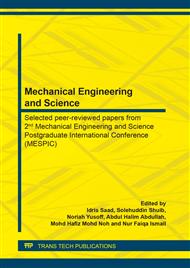p.163
p.169
p.180
p.187
p.193
p.209
p.219
p.230
p.238
Surface Structure of Epoxy Treated Semantan Bamboo (Gigantochloa scortechinii)
Abstract:
Bamboo is well known as the oldest structural material that possess unique anatomical structure and superior mechanical properties. It has become a subject of interest worldwide and research is being conducted for its structural applications including safety, durability and also mechanical properties. Many studies carried out previously indeed have shown superior strength of bamboo. Most of the research circulate on the mechanical properties improvement using chemical, plasma, enzyme, fungi and nanocellulose coating treatment. However, despite the conventional treatments’ advantages, but they are impractical, costly and it able to change the structure of the treated materials. This study aims to evaluate the morphological properties of untreated and treated of Semantan bamboo culm (Gigantochloa scortechinii) after subjected to a simple and cost-effective epoxy treatment. By using Alicona Infinite Focus 3D profilometer machine, the comparison between the untreated and treated surfaces of bamboo can be obtained under profile surface roughness test. Meanwhile, the depth formation of the treated surfaces also can be obtained by using the same machine under profile form management test. Next, optical microscope was used later to examine the epoxy matrix treatment formation of the untreated and treated bamboo surfaces. The result revealed that the application of epoxy treatment gave a better surface roughness and structure as it treat the bamboo strips and concurrently gave a thin layer of coating to the bamboo strips. The findings of this study suggest that epoxy treatment can be an effective and economical approach to treat natural fiber as it resulting in good surface structure which simultaneously increase the chemical and mechanical interlocking; thus, the bond between matrix and natural fiber become stronger.
Info:
Periodical:
Pages:
193-205
Citation:
Online since:
June 2020
Authors:
Price:
Сopyright:
© 2020 Trans Tech Publications Ltd. All Rights Reserved
Share:
Citation:


